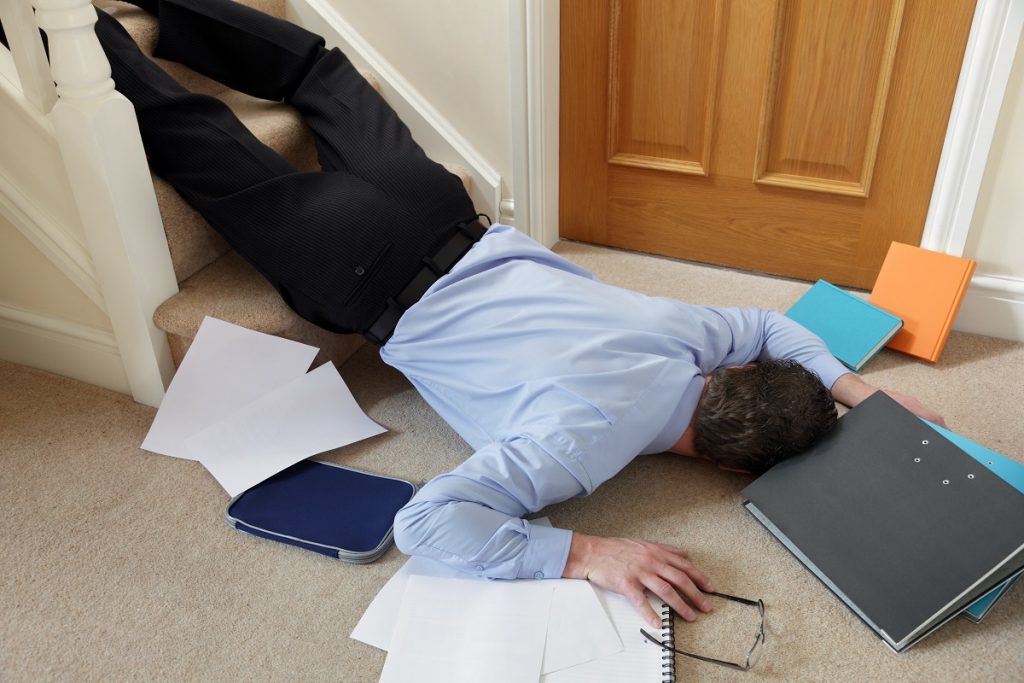The French have an expression: esprit de l’escalier. It translates literally as “the spirit of the staircase.” Metaphorically, it refers to the perfect remark or the funniest reply that someone only thinks of when it’s too late already, like when someone is already walking down the stairs.
But thinking up the best punch line too late isn’t the worst thing that can happen to someone on their way down a set of stairs. There are worse things than comedic hindsight that could be lurking in a stairway. For one thing, when people don’t build them properly, stairways can harbor potentially fatal falls.
The High Cost of Poor Construction
From 2003 to 2015, falling, slipping and tripping have claimed the lives of 386 Australian workers. The majority of these accidents, 56 per cent of them, were because of environmental factors, which include badly designed walkways, materials used were tripping hazards, and poorly lit and maintained stairways. There is a probability that proper maintenance and correct designs could have prevented deaths that involved falls, trips and slips on staircases.
Shoddily maintained and constructed staircases not only cost lives, it can also cost huge sums. A woman won over AUD 1.6 million from the owner of building with unsafe stairs in 2017. According to her account, she stumbled while walking up the emergency staircase of the building and fell over backward, injuring her shoulder. The woman argued that the stairway in question had uneven risers and dim lighting. The owner also only installed non-skid strips on the stairs after the accident had already occurred. These flaws convinced the court to rule in favor of the injured woman, leading to the huge amount awarded to her.
Property owners should pay attention to the design and maintenance of their stairs, whether it’s an emergency stairway in Brisbane or an elegant spiral staircase in Melbourne.
Four Dangerous Steps
There are four types of steps that could be hazardous to people who walk up and down a flight of stairs. They could be the result of shoddy workmanship or poor planning. They are as follows:
- Irregular Steps: These steps are either smaller or taller than other steps in the stairs. This disparity can cause people to become out of balance or slip.
- Short Steps: Steps that are too short and don’t give enough space for the ball of the foot to land is a short step. Since these steps don’t have enough room for the whole feet, they pose a slipping hazard.
- Slippery Steps: These are the result of steps that don’t have non-skid materials to prevent slipping, or if the material of the stair doesn’t provide enough grip, particularly at the edge.
- Surprise Steps: As the name implies, these steps are sometimes not visible or are hard to see because of their placement or surroundings. They can be part of a staircase or solitary steps.

The presence of these hazardous steps would indicate a lapse in the quality of construction. If it’s already too late to change the construction of the steps, there are several ways property owners can mitigate the risks of accidents.
They should install proper lighting in the area to give people better visibility and allow them to spot uneven or slippery steps. Guardrails must be installed and built to specifications and building codes. Finally, appropriate signage can warn people of tripping hazards, such as surprise steps, or slipping hazards, like short steps.
The Spirit of the Staircase is a frustrating event, a missed opportunity for comedy or wit. But a bad enough fall down a stairway is more than frustrating and could cost more than an excellent remark. If contractors and designers do their job well and construct them carefully, there’s no need for a set of stairs to be a dangerous punch line.
